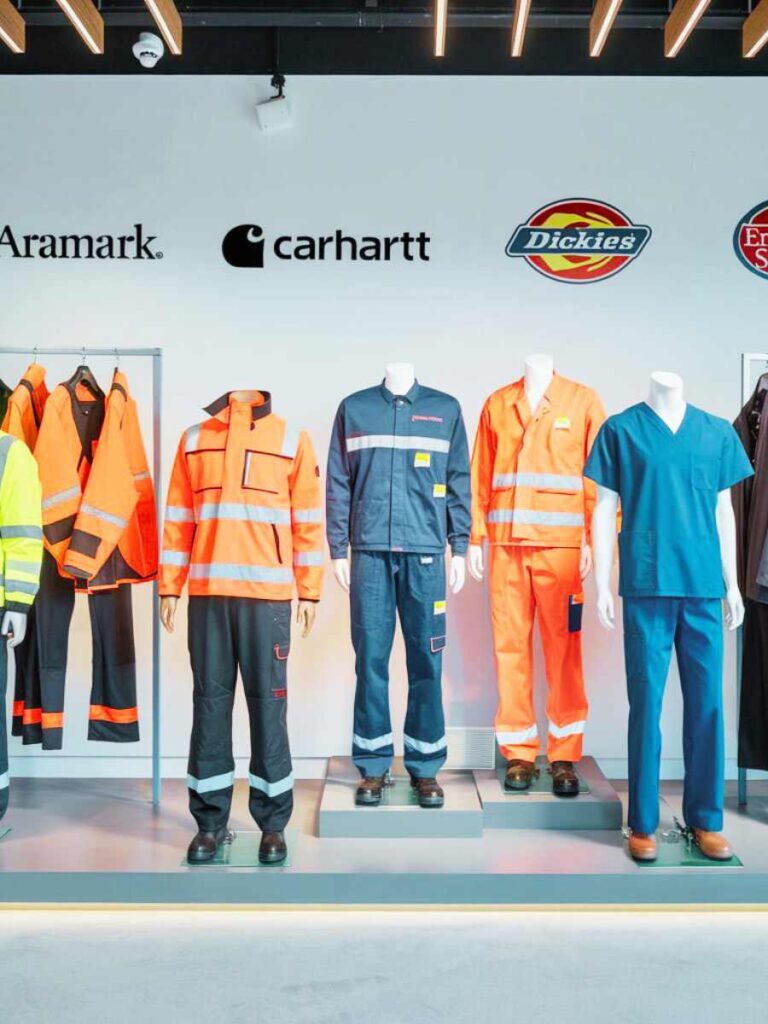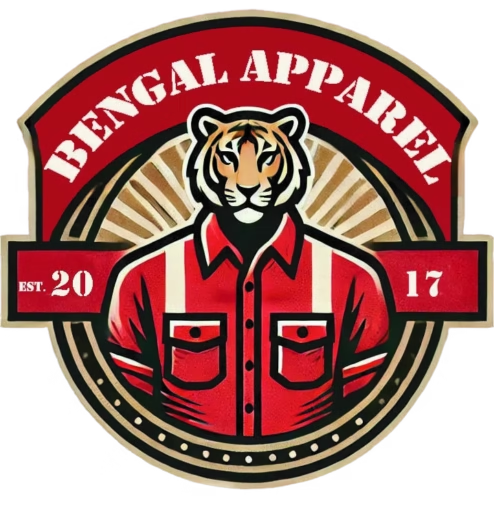The global uniform market is experiencing unprecedented growth, projected to reach $19.5 billion by 2027. Corporate uniforms, healthcare scrubs, hospitality attire, and industrial workwear represent the fastest-growing segments, driven by brand consistency requirements and workplace safety regulations. For B2B buyers, selecting the right manufacturing destination is crucial for balancing quality, cost, and delivery timelines.
When evaluating the best countries for uniform manufacturing, successful procurement teams consider multiple factors beyond unit cost. Labor expertise, fabric availability, compliance certifications, and supply chain reliability directly impact product quality and business outcomes. This comprehensive analysis examines the top uniform manufacturing hubs worldwide, providing actionable insights for sourcing decisions across corporate, healthcare, hospitality, and industrial sectors.
Understanding each country’s strengths, cost structures, and operational characteristics enables informed supplier selection and risk mitigation strategies essential for sustainable uniform procurement programs.
How to Choose the Best Countries for Uniform Manufacturing: 4 Critical Factors
Successful uniform sourcing requires systematic evaluation of multiple criteria that directly impact total cost of ownership and supply chain performance. B2B uniform suppliers by country vary significantly in their capabilities, specializations, and value propositions.
Labor Costs and Skill Levels: Manufacturing wages range from $68 monthly in Bangladesh to $2,500+ in developed countries like Germany and Japan. However, labor costs must be evaluated alongside productivity levels, quality consistency, and technical expertise. Countries with higher wages often deliver superior precision, faster turnaround times, and enhanced customization capabilities.
Fabric Sourcing and Material Quality: Access to quality textiles significantly impacts final product performance. Countries with established textile industries offer better fabric availability, competitive pricing, and vertical integration opportunities. Proximity to cotton production, synthetic fiber manufacturing, and specialized textile mills reduces material costs and supply chain complexity.
Trade Policies and Compliance Standards: Import duties, trade agreements, and regulatory compliance requirements vary dramatically by country. USMCA benefits for Mexican manufacturers, GSP preferences for developing nations, and EU trade partnerships create significant cost advantages for qualifying suppliers.
Infrastructure and Logistics Capabilities: Port accessibility, shipping frequency, and transportation infrastructure determine delivery reliability and total logistics costs. Countries with advanced logistics networks offer more predictable lead times and reduced supply chain risks, particularly important for just-in-time inventory strategies.
Top 10 Countries for Uniform Manufacturing
1. China - Global Textile Manufacturing Leader
China dominates global uniform production, accounting for approximately 31% of worldwide apparel exports. The country’s comprehensive textile ecosystem spans from raw material processing to finished garment manufacturing, offering unmatched scale and integration capabilities.
Industry Reputation: China excels in high-volume production, technical textiles, and complex garment construction. Major manufacturing clusters in Guangdong, Zhejiang, and Jiangsu provinces house thousands of certified facilities specializing in corporate uniforms, workwear, and healthcare apparel.
Strengths:
- Massive production capacity supporting orders from 500 to 500,000+ pieces
- Advanced manufacturing technology including automated cutting and computerized embroidery
- Comprehensive fabric sourcing capabilities covering cotton, synthetics, and technical materials
- Established supply chains for buttons, zippers, and specialized hardware
- Strong quality control systems with international certifications (ISO, OEKO-TEX, WRAP)
Cost Considerations: Production costs range from $3-8 for basic uniforms to $15-25 for complex workwear. Labor costs have increased 40% since 2015, but productivity improvements maintain competitiveness.
Notable Clusters: Guangdong Province houses over 15,000 garment manufacturers, while Shaoxing in Zhejiang specializes in textile production with over 200,000 fabric varieties.
Challenges: Rising labor costs, trade tensions affecting tariffs, and minimum order quantities typically exceeding 1,000 pieces per style.
2. Bangladesh - Cost-Effective Manufacturing Hub
Bangladesh has emerged as a preferred destination for affordable uniform production countries, offering the world’s most competitive labor costs combined with improving quality standards.
Industry Reputation: Bangladesh excels in all kinds of uniform production, particularly for industrial and corporate workwear, high-visibility clothing, aviation and school uniforms, hospitality, and healthcare scrubs. The country has invested heavily in manufacturing infrastructure and workforce training.
Strengths:
- Lowest global labor costs under $120 monthly
- Over 4,000 certified manufacturing facilities
- Strong focus on social compliance and workplace safety
- Improving fabric sourcing capabilities
- Government incentives for textile exports
Cost Considerations: Production costs start at $1.50 for basic items, reaching $8-12 for complex uniforms. Shipping costs add $1-3 per garment for ocean freight.
Notable Clusters: Dhaka and Chittagong regions house most manufacturing facilities, with specialized industrial zones offering infrastructure support.
Challenges: Limited fabric variety requiring imports, longer shipping times (35-45 days), and minimum order quantities typically 1,000+ pieces.
3. India - Affordable Uniform Production
India ranks as the world’s fifth-largest apparel producer, with uniform manufacturing concentrated in specialized clusters offering cost-effective solutions for B2B buyers.
Industry Reputation: India specializes in cotton-based uniforms, school clothing, and healthcare apparel. The country’s handloom heritage translates into skilled craftsmanship for detailed garment construction.
Strengths:
- Competitive labor costs averaging $200 monthly
- Strong cotton textile tradition with local fiber sourcing
- Established export infrastructure through major ports
- Growing compliance with international quality standards
- Flexible production supporting both large and small orders
Cost Considerations: Basic uniform costs range from $2-6, with premium products reaching $12-18. Cotton availability provides significant cost advantages for natural fiber uniforms.
Notable Clusters: Tiruppur in Tamil Nadu produces 90% of India’s knitwear exports, while Bangalore specializes in high-quality uniform manufacturing for multinational corporations.
Challenges: Longer lead times (45-60 days), seasonal production disruptions during monsoons, and variable quality control standards across different regions.
4. Vietnam - Emerging Manufacturing Powerhouse
Vietnam has rapidly developed into a major uniform manufacturing destination, benefiting from competitive costs and improving quality standards.
Industry Reputation: Vietnam focuses on mid-range uniform production with strong capabilities in synthetic fabrics and technical textiles. The country attracts buyers seeking alternatives to Chinese manufacturing.
Strengths:
- Competitive labor costs around $180-250 monthly
- Modern manufacturing facilities with latest technology
- Strong government support for textile industry development
- Growing expertise in technical uniform categories
- Favorable trade agreements with multiple countries
Cost Considerations: Uniform costs range from $3-10 for standard products, with technical workwear reaching $15-20. Quality-to-cost ratio continues improving.
Notable Clusters: Ho Chi Minh City and Hanoi regions concentrate most manufacturing activities, with specialized industrial parks supporting textile production.
Challenges: Limited fabric production requiring imports, skilled labor shortages in some regions, and infrastructure constraints in rural areas.
5. Turkey - European Gateway for Quality Manufacturing
Turkey serves as a strategic bridge between European markets and cost-effective manufacturing, offering high-quality uniform manufacturers with competitive pricing.
Industry Reputation: Turkey specializes in premium uniform production for European brands, emphasizing quality construction and design capabilities. The country excels in corporate uniforms, hospitality attire, and healthcare apparel.
Strengths:
- Strategic location enabling rapid European delivery
- Advanced textile industry with vertical integration
- Strong design and development capabilities
- Compliance with European quality standards
- Skilled workforce with technical expertise
Cost Considerations: Production costs range from $8-18 for quality uniforms, positioning Turkey in the mid-to-premium market segment.
Notable Clusters: Istanbul and Bursa regions house major manufacturing facilities, with specialized zones for textile and apparel production.
Challenges: Higher labor costs compared to Asian alternatives, political instability affecting trade relationships, and currency fluctuations impacting pricing.
6. Mexico - Nearshoring Advantage for North America
Mexico offers significant advantages for North American buyers through custom uniform manufacturing destinations optimized for speed and trade benefits.
Industry Reputation: Mexico focuses on quick-turn uniform production, corporate workwear, and specialized industrial apparel. The country benefits from USMCA trade advantages and geographic proximity.
Strengths:
- Rapid delivery to US markets (2-7 days)
- Zero tariffs under USMCA agreement
- Lower minimum order quantities (100-500 pieces)
- Strong quality control and compliance standards
- Cultural and time zone alignment with US buyers
Cost Considerations: Production costs range from $10-25, offset by savings in shipping, duties, and inventory carrying costs.
Notable Clusters: Tijuana, Mexicali, and León regions specialize in uniform manufacturing with established supplier networks.
Challenges: Higher labor costs, limited capacity for very large orders, and competition for skilled workers with other industries.
7. Pakistan - Cotton Uniform Specialist
Pakistan leverages its position as the world’s fourth-largest cotton producer to offer competitive uniform manufacturing focused on natural fiber products.
Industry Reputation: Pakistan specializes in cotton-based uniforms, particularly for schools, healthcare, and corporate applications. The country’s textile heritage spans over 70 years.
Strengths:
- Direct access to quality cotton fiber
- Competitive production costs
- Established export infrastructure
- Growing compliance with international standards
- Skilled workforce in cotton textile production
Cost Considerations: Cotton uniform costs range from $2-8, with synthetic blends reaching $6-12. Raw material advantages provide competitive pricing.
Notable Clusters: Karachi, Lahore, and Faisalabad regions concentrate textile manufacturing with supporting infrastructure.
Challenges: Political instability affecting trade relationships, power supply interruptions, and limited synthetic fabric capabilities.
8. Thailand - Quality-Focused Manufacturing Hub
Thailand has positioned itself as a quality-focused manufacturing destination, particularly strong in hospitality uniforms and corporate attire.
Industry Reputation: Thailand emphasizes quality over quantity, targeting premium uniform segments including hotels, restaurants, and corporate workwear.
Strengths:
- Consistent quality standards and attention to detail
- Skilled workforce with technical expertise
- Modern manufacturing facilities
- Strategic location for Asian market access
- Government support for textile industry development
Cost Considerations: Production costs range from $6-15 for quality uniforms, positioning Thailand in the mid-market segment.
Notable Clusters: Bangkok and surrounding provinces house most manufacturing facilities with established supplier networks.
Challenges: Higher costs compared to other Asian alternatives, limited capacity for very large orders, and increasing competition from Vietnam.
9. Italy - Luxury Uniform Manufacturing
Italy represents the premium end of uniform manufacturing, specializing in luxury hospitality, corporate executive wear, and high-end workwear.
Industry Reputation: Italy focuses on premium uniform production emphasizing design, quality construction, and luxury materials. The country serves high-end hotels, executive corporate wear, and luxury retail uniforms.
Strengths:
- World-class design and development capabilities
- Superior quality construction and finishing
- Access to premium fabrics and materials
- Strong brand reputation for luxury products
- Skilled artisan workforce
Cost Considerations: Premium uniform costs range from $35-100+, targeting luxury market segments requiring superior quality and design.
Notable Clusters: Northern Italy regions including Milan, Florence, and Veneto house major manufacturing facilities.
Challenges: High production costs, limited capacity for large volume orders, and long lead times for custom development.
10. USA - Domestic Manufacturing Renaissance
The United States is experiencing renewed interest in domestic uniform manufacturing, driven by supply chain security concerns and “Made in USA” preferences.
Industry Reputation: US manufacturing focuses on specialized uniforms including military, first responder, and high-security applications requiring domestic production.
Strengths:
- Zero shipping time and duties for domestic sales
- Superior quality control and compliance oversight
- Flexible production supporting quick-turn orders
- Strong intellectual property protection
- Skilled workforce with technical expertise
Cost Considerations: Production costs range from $25-75, positioning US manufacturing in the premium market segment.
Notable Clusters: North Carolina, Georgia, and California regions house established uniform manufacturing facilities.
Challenges: Highest global production costs, limited capacity for very large orders, and competition from lower-cost alternatives.
Comparative Analysis: Cost vs. Quality by Country
| Country | Cost Range | Lead Time | Quality Tier | Best For |
|---|---|---|---|---|
| Bangladesh | $1.50-$8 | 35-45 days | Basic-Mid | High volume, budget-conscious |
| China | $3-$15 | 25-35 days | Mid-Premium | Complex designs, large orders |
| India | $2-$12 | 45-60 days | Basic-Mid | Cotton uniforms, flexible MOQs |
| Vietnam | $3-$15 | 30-40 days | Mid | Technical fabrics, China alternative |
| Mexico | $10-$25 | 5-14 days | Mid-Premium | Quick delivery, US market |
| Turkey | $8-$18 | 15-25 days | Premium | European market, quality focus |
| Italy | $35-$100+ | 45-60 days | Luxury | Design-focused, premium brands |
| USA | $25-$75 | 5-10 days | Premium | Domestic requirements, security |
How to Choose the Right Country for Your Uniform Needs
Selecting the optimal manufacturing destination requires aligning country strengths with specific business requirements and constraints.
For Budget-Conscious High-Volume Orders: Bangladesh and India offer the most competitive pricing for orders exceeding 1,000 pieces. These countries excel in basic uniform production with acceptable quality standards for corporate and industrial applications.
For Quality-Focused Mid-Volume Production: China and Vietnam provide the best balance of quality, cost, and capability for orders ranging from 500-5,000 pieces. These countries offer advanced manufacturing technology and consistent quality control.
For Quick-Turn North American Orders: Mexico provides unmatched speed-to-market advantages for US buyers, with delivery times under two weeks and zero import duties under USMCA.
For Premium and Luxury Applications: Italy and Turkey specialize in high-end uniform production emphasizing design, construction quality, and premium materials for luxury hospitality and executive corporate wear.
Supplier Vetting Best Practices:
- Conduct facility audits or third-party inspections
- Request pre-production samples for quality assessment
- Verify compliance certifications and social responsibility standards
- Establish clear quality specifications and acceptance criteria
- Implement quality control checkpoints throughout production
Conclusion
The best countries for uniform manufacturing vary significantly based on specific business requirements, quality expectations, and budget constraints. Bangladesh and India lead in cost-effectiveness for high-volume basic uniforms, while China offers the most comprehensive capabilities for complex designs and mid-range pricing.
For North American buyers prioritizing speed and trade advantages, Mexico provides compelling benefits despite higher unit costs. European markets benefit from Turkey’s strategic location and quality focus, while Italy serves luxury segments requiring premium construction and design.
Successful uniform procurement requires matching country strengths with business objectives, implementing robust supplier vetting processes, and maintaining clear quality standards throughout the manufacturing relationship.
Ready to source reliable uniform manufacturers for your business? Contact our sourcing experts for customized recommendations based on your specific requirements, volume projections, and quality standards




